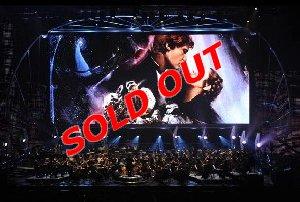The best way government – and business – can assist the arts is not, funnily enough, by handing out money. It’s by placing this cultural continuum firmly on the national agenda, by giving it relevance and respect in the social conversation.
Governments need to frame the discussion in terms other than simply the economic cost and benefit.
One of the best people for doing that was Paul Keating – in fact he did it so well, he was voted out of government. But for a brief time, the arts were firmly on the national agenda – not as something to spend taxpayers’ money on per se but as something to experience and, more importantly, enjoy. Imagine that: growing our audience by our work being valued and enjoyed for its own sake. Not because it satisfies some need for self-improvement but because it makes life so much more rewarding. And we need to keep doing that because if we continually position ourselves as a basket case permanently after a hand out, we do ourselves immense damage. There is no better publicity for a theatre company than the sold out sign. The most satisfying way for any theatre practitioner to make money is to sell tickets. Any artist who delights in a small audience is either deluded or pretentious, probably both.
I suspect that the strength of Keating’s engagement with the arts community was seen by those very wise heads in ALP head office – and aren’t they doing well – as being one of the drivers behind the electoral backlash against him. Consequently, serious engagement with the arts at a federal level has been avoided like the plague ever since. I think the last theatre Tony Abbott was in was when he had his appendix out. Even apublicity shot with Cate Blanchett or Claudia Karvan is now seen as dangerously elitist or pandering to the luvvies – what do they know? They don’t even live here but swan around the world making movies!
I remember having a conversation with Edmund Capon when he was director of the Art Gallery of NSW about how impossible it was to get Bob Carr, surely one of the most cultured and well-read premiers since Robert Askin, along to an opening of any major exhibition. The premier told him that if he turned up at a gallery opening, he would be immediately howled down by talk-back radio as a snob who could throw away money on paintings, most probably that a six year old could do, but couldn’t fix the roads. And this would probably then be followed by a diatribe that Pro Hart has never won the Archibald so what do those poofs know about art?
Another advantage of becoming less reliant on the public purse and more on public sentiment is the artistic freedom that flows from independence. When the Sydney Theatre Company began, it was subsidised by the state to the tune of 45% of revenue. That figure is now down to 7%. However, the perception remains that we are a heavily subsidised company and must be beholden to the artistic imperatives of the funding bodies’ guidelines. In effect, we are being asked to overwhelmingly finance ourselves through box-office revenue yet at the same time satisfy non-commercial cultural criteria that hamper our ability to generate revenue.
Leigh Tabrett makes a similar point in her Platform Paper It’s Culture, Stupid! Reflections of an Arts Bureaucrat. By restricting the subsidised sector’s ability to form commercial partnerships, current funding arrangements are putting us at a disadvantage. She also makes the point that the drip-feeding of funding through individual projects, annual or even triennial funding is wasteful and makes it impossible for companies to operate efficiently. Better to give the money in a lump sum and let companies invest as they see fit – there are some financial heavy-hitters on the boards of our major arts organisations, I think they know what to do with money. And we know how to make our art.
Maybe we could make more money by programming more of the commercially viable work that would then allow us to self-finance the risk-heavy work that appeals to a smaller audience. Maybe by programming established or mid-career writers we could grow an audience for emerging talents while providing an economic buffer against their necessarily experimental offerings. Maybe we should be the ones commissioning new projects and funding them on the basis of artistic merit rather than a government bureaucracy – do they not trust us to recognise new and exciting practitioners in our own profession?
Could I please take this opportunity to remind any arts bureaucrats present that these opinions are not officially endorsed in any way by the management and board of the Sydney Theatre Company.
So where does business come in? Well, for a start, business can help through sponsorship, or in kind with the more pragmatic underpinnings of our industry – venue maintenance, plumbing, power, air-conditioning, legals, insurance, signage and so on.
But more importantly, they can join in the campaign to generate public interest and relevance. It was with great sadness and disbelief that I read last week of the death of James Strong. Here was a man of impeccable business credentials who was equally at home talking to V8 Supercar drivers and subscribers at an STC opening night. He was able to see worth and find pleasure in a vast range of sporting and cultural pursuits, the quintessential Renaissance man. He recognised the importance of appreciating both the physical and intellectual aspects of being human and truly appreciated the ephemeral value that artistic engagement can bring.
We need more people like him, not less. People who are able to see beyond the purely commercial value of sponsorship and appreciate its less tangible benefits: engagement with the creative community, intellectual and spiritual enrichment. Besides, the more we grow public awareness of the arts, the greater the commercial benefit of sponsorship.
How many people know that Hugh Jackman got his break doing Oklahoma for the subsidised National Theatre of Great Britain and then cemented his US reputation by playing Peter Allen in an Australian musical on Broadway? He now plays across a wide spectrum so why shouldn’t we as an industry as a whole?
And then there’s philanthropy, as we know, a tradition that completely underpins the arts in the US – there wouldn’t be a Metropolitan Opera without very subtantial private donations. Even to be a volunteer guide on the backstage tours, you have to donate $10,000 a year. That’s brand value. We’re slowly working toward a model of individual generosity in this country – Simon Mordant’s donation to the MCA to help build the new wing, for example. Simon, along with a little-known businessman called David Gonski, gave large individual donations to the STC’s recent hit, The Secret River. The project would not have happened without them. If Marius Kloppers donated 5% of his severance package as a tax deduction, Belvoir Street could be financially independent for life.
We have the financial and investment knowledge on our boards; we know how to manage money. With an adequate capital fund, we could become self-sufficient.
This is an edited extract of a speech to First Currency House Arts and Public Life Breakfast 2013.





